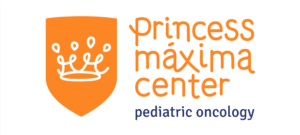Timeframe: 2023 – 2025
Goals: Model development and understanding the requirements for FLC tumor formation
Principal Investigators: Benedetta Artegiani, PhD; and Delilah Hendriks, PhD

Study overview: In comparison with more common cancers, research models of FLC have been extremely limited. Drs. Artegiani and Hendriks have addressed this problem by creating “synthetic” models of FLC, generating cultures of normal cells as organoids (3D mini-organs). Specifically, they developed both liver cell organoids and techniques to genetically modify these organoids using CRISPR technology by which specific genetic changes can be introduced into normal cells.
In previous work, these investigators “knocked-in” the DNAJB1-PRKACA fusion gene into organoids. They found that this altered the normal hepatic cells to resemble FLC cancer cells in some respects, especially by changing patterns of gene expression in ways consistent with actual tumor cells. However, these gene-modified organoids did not fully transform into malignant cancer cells. While the DNAJB1-PRKACA fusion is clearly known to be the driver of FLC, and essential for the growth and survival of FLC tumor cells, there have been other suggestions that this fusion gene alone if not enough for the complete transformation to a robust FLC-like cancer. Similar observations were reported previously in studies of knock-in of the fusion oncogene into livers of young mice; in this case, at least one additional genetic change was required to yield aggressive tumor growth.
In this current study, the applicants propose to extend their initial findings in several ways. A major goal is to determine whether the introduction of additional mutations in cells containing the DNAJB1-PRKACA fusion can generate biological features more closely resembling fully transformed FLC cancer cells. The team will also determine whether introduction of the fusion gene and other genetic changes into normal ductal organoids gives more complete FLC-like transformation than in liver organoids. Finally, they propose to study influences of the tumor microenvironment on cells with the characteristic mutations of FLC by establishing co-cultures of the genetically modified cells with “mini-liver” cultures containing multiple cell types.
Successful accomplishment of the goals of this study should:
- reveal drivers of FLC that act in coordination with the fusion gene, which could lead to the discovery and design of new therapeutic approaches.
- build an understanding of the cause of observed heterogeneity among FLC patients
- create new disease models useful for the testing and development of FLC therapeutics.
